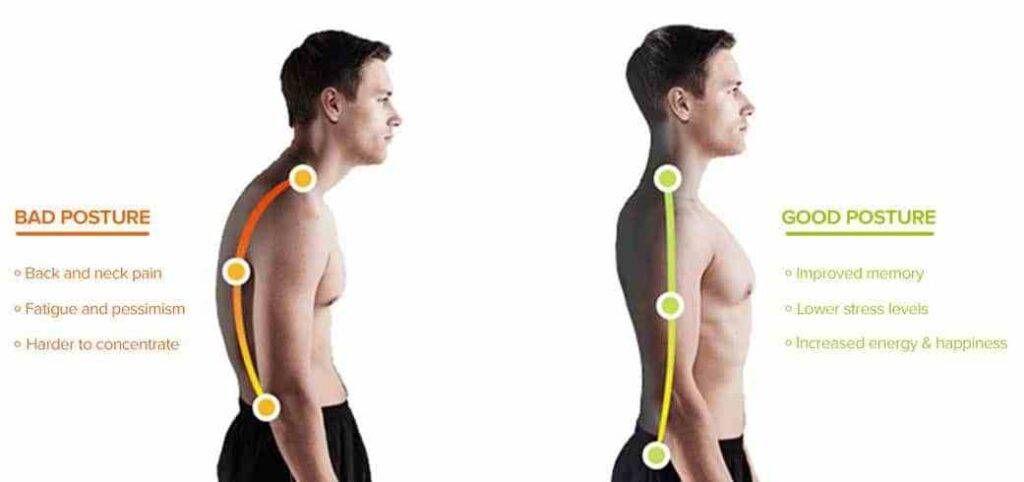

Poor posture and back pain are common issues that affect millions of people worldwide. Let’s learn more about this topic below with Eggy Car and discover effective strategies to enhance your posture and alleviate discomfort.
Good posture is essential for overall health and well-being. It involves maintaining the correct alignment of your body while standing, sitting, or lying down. When you have proper posture, your bones, muscles, and joints work together efficiently, reducing strain on your body and minimizing the risk of pain and injury. Maintaining good posture can also improve your breathing, digestion, and circulation, as well as boost your confidence and appearance.
Unfortunately, many people develop poor posture habits due to sedentary lifestyles, prolonged periods of sitting, and the overuse of electronic devices. This can lead to a host of problems, including back pain, neck strain, headaches, and even digestive issues. By understanding the importance of good posture and implementing strategies to improve it, you can significantly enhance your quality of life and prevent many health issues associated with poor alignment.
Before we delve into the solutions, it’s crucial to understand the factors that contribute to poor posture and back pain. One of the primary culprits is our modern lifestyle, which often involves long hours of sitting at desks or hunching over electronic devices. This prolonged sitting can lead to muscle imbalances, weakened core muscles, and a forward head posture that puts unnecessary strain on the neck and upper back.
Other common causes of poor posture and back pain include:
. Sedentary lifestyle and lack of physical activity
. Obesity and excess weight
. Muscle weakness or imbalances
. Poor ergonomics in the workplace or at home
. Prolonged use of smartphones and tablets
. Wearing high heels or uncomfortable shoes
. Carrying heavy bags or backpacks improperly
. Stress and tension
. Certain medical conditions, such as arthritis or scoliosis
By identifying the factors that contribute to your poor posture and back pain, you can take targeted steps to address these issues and improve your overall posture and comfort.
Improving your posture requires a combination of awareness, exercises, and lifestyle changes. Here are some effective strategies to help you achieve better posture and reduce back pain:
The first step in improving your posture is to become more aware of how you hold your body throughout the day. Make a conscious effort to check your posture regularly, whether you’re sitting, standing, or walking. Imagine a string pulling you up from the crown of your head, elongating your spine and aligning your body. Keep your shoulders relaxed and pulled back slightly, engage your core muscles, and distribute your weight evenly on both feet when standing.
When sitting, ensure that your feet are flat on the floor, your knees are at a 90-degree angle, and your back is supported against the chair. Avoid slouching or leaning forward for extended periods. Set reminders on your phone or computer to prompt you to check and correct your posture throughout the day.
A strong core and back are essential for maintaining good posture. Incorporate exercises that target these muscle groups into your fitness routine. Some effective exercises include:
. Planks: Hold a plank position for 30 seconds to a minute, focusing on engaging your core muscles.
. Bird dog: Start on your hands and knees, then extend one arm forward and the opposite leg back, holding for a few seconds before switching sides.
. Bridges: Lie on your back with your knees bent and feet flat on the floor. Lift your hips off the ground, engaging your glutes and core muscles.
. Superman: Lie face down on the floor, then lift your arms, legs, and chest off the ground simultaneously, holding for a few seconds.
. Cat-cow stretch: Start on your hands and knees, alternating between arching your back (cow) and rounding it (cat).
Perform these exercises regularly, aiming for 2-3 sets of 10-15 repetitions each. As you build strength, you’ll find it easier to maintain good posture throughout the day.
Regular stretching and mobility exercises can help alleviate muscle tension and improve flexibility, which are crucial for maintaining good posture. Focus on stretches that target the chest, hip flexors, hamstrings, and shoulders, as these areas tend to become tight with prolonged sitting. Some beneficial stretches include:
. Chest stretch: Stand in a doorway with your arms extended to the sides, then lean forward to feel a stretch across your chest.
. Hip flexor stretch: Kneel on one knee with the other foot forward, then gently push your hips forward until you feel a stretch in the front of your hip.
. Hamstring stretch: Sit on the floor with one leg extended and the other bent, then reach for your toes while keeping your back straight.
. Shoulder rolls: Roll your shoulders backward in a circular motion to release tension in the upper back and neck.
Incorporate these stretches into your daily routine, holding each for 15-30 seconds and repeating 2-3 times. Remember to breathe deeply and avoid bouncing or forcing the stretches.
In addition to exercises and stretches, making certain lifestyle changes can significantly improve your posture and reduce back pain. Consider implementing the following strategies:
If you spend a lot of time working at a desk, it’s crucial to create an ergonomic workspace that supports good posture. Ensure that your chair provides adequate lumbar support and allows your feet to rest flat on the floor. Position your computer monitor at eye level to avoid craning your neck, and use a keyboard and mouse that allow your wrists to remain in a neutral position. Consider using a standing desk or alternating between sitting and standing throughout the day to reduce the negative effects of prolonged sitting.
The overuse of smartphones and tablets can contribute significantly to poor posture, particularly causing “text neck” – a condition resulting from constantly looking down at your device. To combat this, hold your phone or tablet at eye level when using it, and take frequent breaks to stretch and move around. When using your device for extended periods, consider using a stand or holder to maintain a more neutral neck position.
Your sleeping position can have a significant impact on your posture and back health. Use a supportive mattress and pillow that keep your spine aligned. If you sleep on your side, place a pillow between your knees to maintain proper hip alignment. If you sleep on your back, a small pillow under your knees can help reduce strain on your lower back. Avoid sleeping on your stomach, as this position can cause neck and back strain.
Engaging in regular physical activity is crucial for maintaining good posture and overall health. Aim for at least 150 minutes of moderate-intensity aerobic exercise or 75 minutes of vigorous-intensity aerobic exercise per week, as recommended by health professionals. Activities like walking, swimming, cycling, and yoga can help improve your posture, strengthen your muscles, and increase your flexibility.
The shoes you wear can significantly affect your posture and back health. Choose shoes that provide adequate support and cushioning, particularly if you spend a lot of time on your feet. Avoid wearing high heels for extended periods, as they can alter your body’s alignment and put extra stress on your lower back. If you must wear heels, opt for lower heights and bring a pair of comfortable shoes to change into when possible.
Stress and tension can cause you to unconsciously tighten your muscles, leading to poor posture and back pain. Practice stress-reduction techniques such as deep breathing exercises, meditation, or progressive muscle relaxation to help release tension in your body. Regular relaxation practices can not only improve your posture but also contribute to better overall physical and mental health.
In conclusion, improving your posture and preventing back pain requires a holistic approach that combines awareness, targeted exercises, and lifestyle modifications.